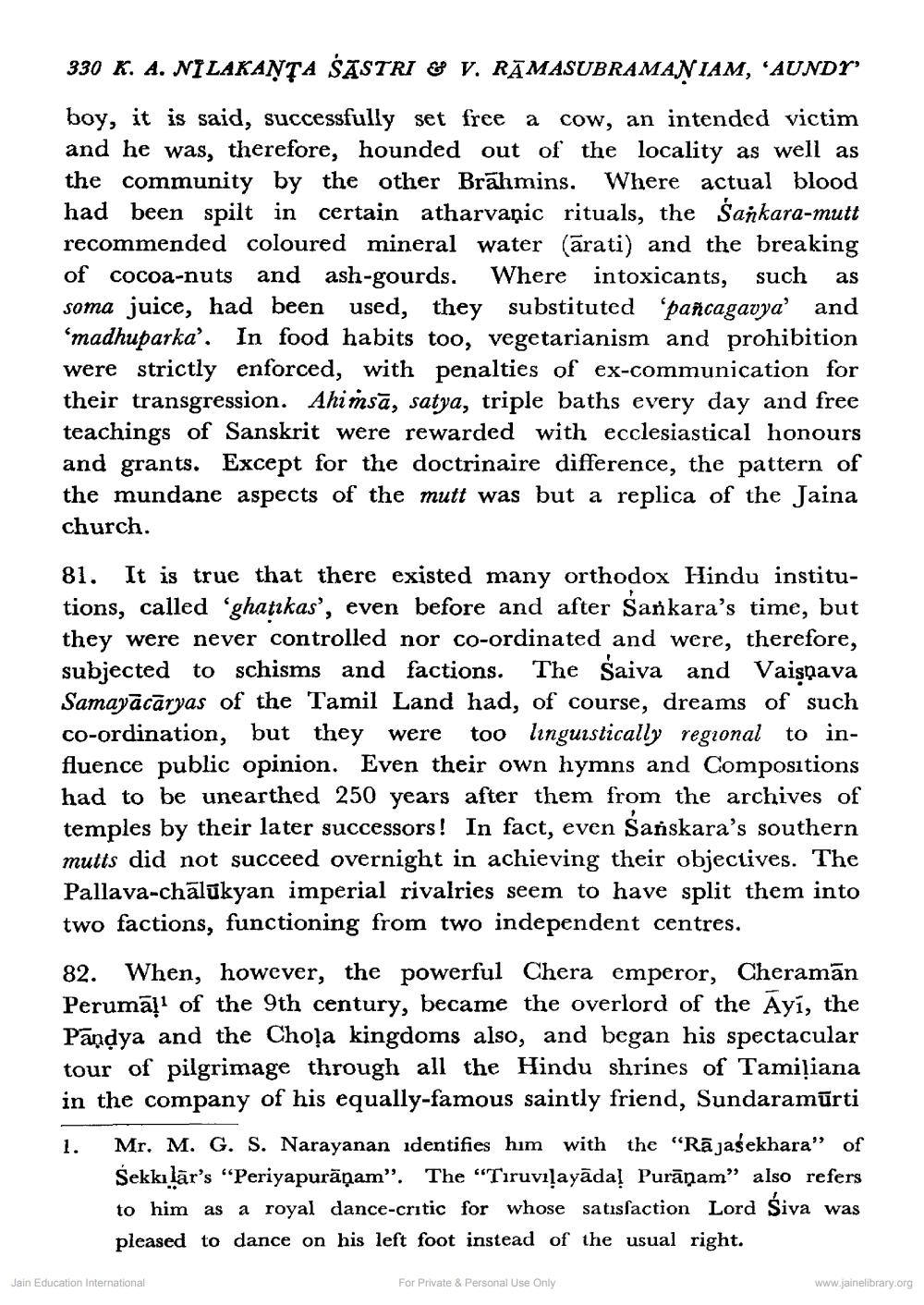________________
330 K. A. NILAKANŢA SASTRI & V. RĀMASUBRAMANIAM, ‘AUNDY
boy, it is said, successfully set free a cow, an intended victim and he was, therefore, hounded out of the locality as well as the community by the other Brāhmins. Where actual blood had been spilt in certain atharvaņic rituals, the Sankara-mutt recommended coloured mineral water (ārati) and the breaking of cocoa-nuts and ash-gourds. Where intoxicants, such as soma juice, had been used, they substituted 'pañcagavya' and 'madhuparka'. In food habits too, vegetarianism and prohibition were strictly enforced, with penalties of ex-communication for their transgression. Ahimsā, satya, triple baths every day and free teachings of Sanskrit were rewarded with ecclesiastical honours and grants. Except for the doctrinaire difference, the pattern of the mundane aspects of the mutt was but a replica of the Jaina church. 81. It is true that there existed many orthodox Hindu institutions, called 'ghatikas', even before and after Sankara's time, but they were never controlled nor co-ordinated and were, therefore, subjected to schisms and factions. The Saiva and Vaispava Samayācāryas of the Tamil Land had, of course, dreams of such co-ordination, but they were too linguistically regional to influence public opinion. Even their own hymns and Compositions had to be unearthed 250 years after them from the archives of temples by their later successors! In fact, even Sanskara's southern mutts did not succeed overnight in achieving their objectives. The Pallava-chālūkyan imperial rivalries seem to have split them into two factions, functioning from two independent centres. 82. When, however, the powerful Chera emperor, Cheramān Perumāļi of the 9th century, became the overlord of the Ayí, the Pandya and the Choļa kingdoms also, and began his spectacular tour of pilgrimage through all the Hindu shrines of Tamiļiana in the company of his equally-famous saintly friend, Sundaramūrti 1. Mr. M. G. S. Narayanan identifies him with the “Rājasekhara" of
Sekkılār's “Periyapurāņam”. The “Tiruviļayāda! Purāņam” also refers to him as a royal dance-critic for whose satisfaction Lord Siva pleased to dance on his left foot instead of the usual right.
Siva was
Jain Education International
For Private & Personal Use Only
www.jainelibrary.org




